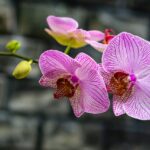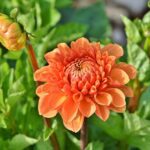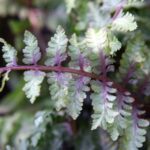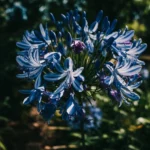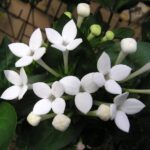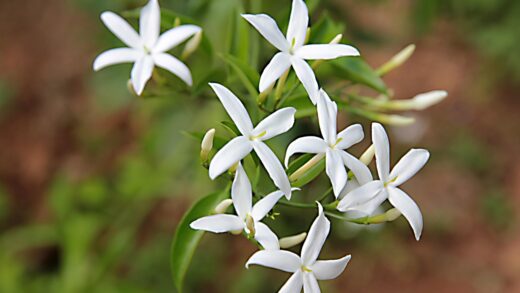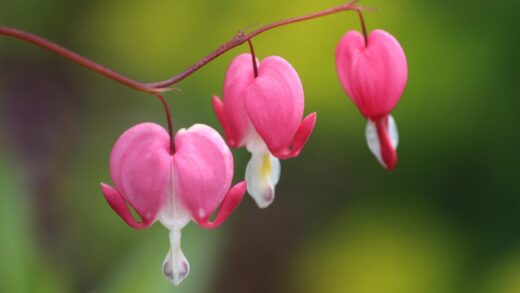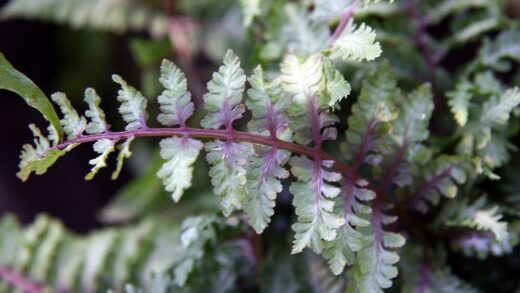Providing the appropriate nutrition for lily of the valley is a practice of subtlety and understanding, rather than one of aggressive feeding schedules. This resilient woodland perennial is not a heavy feeder and, in its natural habitat, thrives on the slow and steady decomposition of organic matter on the forest floor. Therefore, the primary goal of a fertilization strategy should be to replicate this nutrient-rich, humus-heavy soil environment. Over-fertilization can be more harmful than under-fertilization, potentially leading to lush, weak foliage at the expense of the plant’s cherished, fragrant flowers, and can even damage the sensitive rhizomes.
The foundation of good nutrition for lily of the valley is laid well before any supplemental fertilizers are considered. It begins with the initial preparation of the garden bed. By creating a soil structure that is rich in organic materials like compost and leaf mould, you establish a nutrient reservoir that will sustain the plants for years. This focus on building healthy soil is a more sustainable and effective approach than relying on frequent applications of chemical fertilizers.
Understanding the plant’s annual growth cycle is also key to timing any nutrient application correctly. The plant has specific periods when its nutrient uptake is at its highest, primarily in the early spring as new growth emerges. Applying nutrients at this time ensures they are available when the plant needs them most for developing strong foliage and abundant blooms. Feeding the plant at the wrong time of year is inefficient and can be counterproductive.
Ultimately, a successful nutrient management plan for lily of the valley is one that prioritizes the long-term health of the soil ecosystem. This involves a commitment to organic amendments, careful observation of the plant’s condition, and a restrained hand with any supplemental fertilizers. By nourishing the soil, you are in turn providing the plants with everything they need to flourish and form the dense, beautiful groundcover they are known for.
The role of organic soil enrichment
The single most important aspect of nourishing lily of the valley is the enrichment of the soil with organic matter. This plant has evolved to grow in the humus-rich layer of soil found on forest floors, which is constantly replenished by falling leaves and other decomposing natural materials. Recreating this environment in the garden is the key to providing a sustainable source of nutrition. Before planting a new bed, incorporating several inches of well-rotted compost, aged manure, or leaf mould is essential.
More articles on this topic
This initial soil amendment does more than just provide nutrients. It fundamentally improves the soil’s structure, aeration, and water-retention capabilities. Healthy soil is teeming with microbial life, and these microorganisms play a vital role in breaking down organic matter and converting it into forms that the plant’s roots can absorb. By adding compost, you are not just feeding the plant directly; you are feeding the entire soil ecosystem that supports the plant.
For established colonies of lily of the valley, this process of organic enrichment should be an annual task. Each spring, applying a top dressing of fresh compost or leaf mould around the base of the plants will continue to replenish the soil’s nutrient supply. This slow-release form of feeding is perfectly suited to the plant’s modest nutritional needs and prevents the shock that can be caused by strong, synthetic fertilizers.
This long-term approach to building soil fertility is far superior to quick-fix fertilization methods. A deep, rich, and biologically active soil provides a steady, balanced diet for the plants throughout their growing season. It creates a resilient environment that helps the plants better withstand stresses such as drought or disease, leading to a healthier and more vigorous patch overall.
Understanding nutrient needs
Lily of the valley, like all plants, requires a balance of essential macronutrients for healthy growth: nitrogen (N), phosphorus (P), and potassium (K). Nitrogen is crucial for the development of lush, green foliage. Phosphorus plays a key role in root development and the formation of flowers. Potassium is vital for overall plant vigor, disease resistance, and the efficient movement of water and nutrients within the plant.
More articles on this topic
While it needs these nutrients, lily of the valley’s requirements are relatively modest. The plant prioritizes developing its extensive network of underground rhizomes, and excessive nitrogen can disrupt this focus. Too much nitrogen will stimulate rapid, weak leaf growth that is more susceptible to pests and diseases, and it can significantly reduce or even inhibit the production of flowers. Therefore, a balanced nutrient profile is far more important than a high-nitrogen one.
The best source for these balanced nutrients is well-decomposed organic matter. Compost, for example, typically contains a wide array of macro- and micronutrients in a stable, slow-release form. This prevents the nutrient imbalances that can occur with the improper use of synthetic fertilizers. Relying on organic amendments ensures that the plant gets what it needs without being overwhelmed.
If you do choose to use a granular fertilizer, it is crucial to select a balanced formula, such as a 10-10-10, or one that is slightly higher in phosphorus to encourage blooming. However, this should be seen as a supplement to, not a replacement for, a soil rich in organic matter. Always apply such fertilizers sparingly and strictly according to the manufacturer’s instructions to avoid burning the plant’s roots.
Timing of fertilizer application
The timing of any nutrient application is critical to ensure it aligns with the plant’s growth cycle and ability to utilize the nutrients effectively. The most beneficial time to provide a nutritional boost to lily of the valley is in the very early spring. This is when the plant is breaking dormancy and the new pips are just starting to push through the soil. Applying nutrients at this stage makes them readily available for the period of rapid leaf and flower development that is about to begin.
An annual top dressing of compost or a light scattering of a balanced, slow-release granular fertilizer should be applied as this new growth appears. Gently spread the material over the soil surface around the plants, being careful not to bury the emerging pips. If using a granular product, lightly scratch it into the soil surface and then water the area well to help the nutrients begin to dissolve and move down into the root zone.
Avoid fertilizing lily of the valley in the summer after it has finished flowering. During this period, the plant’s active growth slows, and it shifts its focus to storing energy in its rhizomes. Adding fertilizer at this time is unnecessary and can stimulate late-season growth that may be vulnerable to damage from an early frost. The plant has all the resources it needs in its foliage to prepare for the coming winter.
Similarly, fertilizing in the late autumn or winter is not recommended. The plant is dormant and not actively taking up nutrients from the soil. Any fertilizer applied at this time will likely be washed away by winter rains and snowmelt before the plant can use it in the spring, leading to wasted resources and potential water pollution. Stick to a single, well-timed application in the early spring for the best results.
Recognizing nutrient deficiency
While lily of the valley is generally trouble-free in well-prepared soil, it can occasionally show signs of nutrient deficiency, particularly in poor or neglected soil. One of the most common signs is chlorosis, or the yellowing of the leaves. If the leaves, particularly the older ones, appear pale green or yellow while the veins remain somewhat green, it could indicate a nitrogen deficiency. Stunted growth and a sparse appearance can also be symptoms of low nitrogen.
A deficiency in phosphorus, while less common, can also affect the plant’s health. Symptoms may include a purplish tinge to the leaves and, most notably, a significant reduction in flowering. If your patch of lily of the valley is producing healthy foliage but consistently fails to bloom, a lack of phosphorus in the soil could be a contributing factor. A soil test is the most accurate way to confirm this.
Potassium deficiency often manifests as yellowing or browning along the margins or edges of the leaves, starting with the older, lower foliage. The plant may also exhibit a general lack of vigor and be more susceptible to diseases. Since potassium is crucial for overall plant health and resilience, a deficiency can make the entire colony look weak and stressed.
If you suspect a nutrient deficiency, the first step should be to top-dress the area with a high-quality compost, as this can often correct minor imbalances. If the problem persists, a professional soil test is the most prudent course of action. The test results will provide a precise diagnosis of which nutrients are lacking and will offer specific recommendations for how to amend the soil to correct the problem without resorting to guesswork.
The sustainable approach to feeding
A sustainable approach to feeding lily of the valley focuses on creating a self-sustaining soil ecosystem rather than relying on external inputs. This method is not only better for the plant but also for the broader garden environment. The cornerstone of this approach is the consistent addition of organic materials. This can be achieved by leaving fallen leaves from overhead trees to decompose in place over the winter, just as they would in a natural woodland.
This natural leaf litter serves as a slow-release fertilizer and a protective mulch all in one. As the leaves break down over the course of the seasons, they release a balanced mix of nutrients, improve soil structure, and feed the beneficial microbial populations in the soil. This creates a closed-loop system where the plants are nourished by the very environment they inhabit.
Another sustainable practice is to create your own compost from kitchen scraps and garden waste. Applying a layer of this homemade compost to your lily of the valley bed each spring is one of the best things you can do for the health of the soil and the plants. It recycles nutrients within your own garden, reduces waste, and eliminates the need to purchase synthetic fertilizers.
Ultimately, this sustainable feeding strategy requires a shift in perspective. Instead of thinking about “feeding the plant,” the focus becomes “feeding the soil.” A healthy, living soil, rich in organic matter and microbial life, will provide your lily of the valley with all the nutrition it needs to thrive and produce its wonderfully fragrant blooms year after year, with minimal intervention required.








